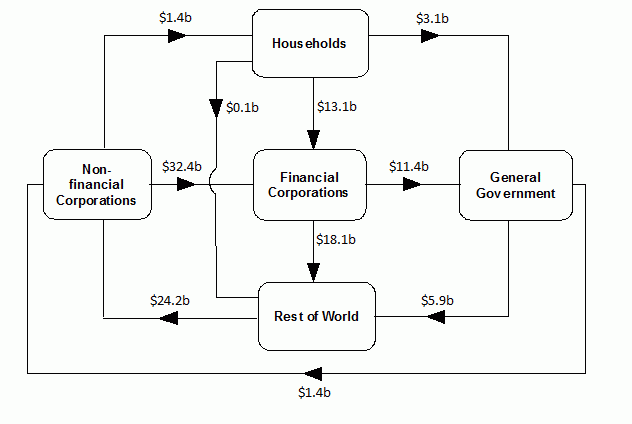Graph 2 - Net financial investment (net lending (+) / net borrowing (-))
[["Jun-99","Sep-99","Dec-99","Mar-99","Jun-00","Sep-00","Dec-00","Mar-00","Jun-01","Sep-01","Dec-01","Mar-01","Jun-02","Sep-02","Dec-02","Mar-02","Jun-03","Sep-03","Dec-03","Mar-03","Jun-04","Sep-04","Dec-04","Mar-04","Jun-05","Sep-05","Dec-05","Mar-05","Jun-06","Sep-06","Dec-06","Mar-06","Jun-07","Sep-07","Dec-07","Mar-07","Jun-08","Sep-08","Dec-08","Mar-08","Jun-09","Sep-09","Dec-09","Mar-09","Jun-10","Sep-10","Dec-10","Mar-10","Jun-11","Sep-11","Dec-11","Mar-11","Jun-12","Sep-12","Dec-12","Mar-12","Jun-13","Sep-13","Dec-13","Mar-13","Jun-14","Sep-14","Dec-14","Mar-14","Jun-15","Sep-15","Dec-15","Mar-15","Jun-16","Sep-16","Dec-16","Mar-16","Jun-17","Sep-17","Dec-17","Mar-17","Jun-18","Sep-18","Dec-18","Mar-18","Jun-19"],[[-8.6690000000000005],[-10.474],[-6.6459999999999999],[-7.2249999999999996],[-7.5730000000000004],[-6.327],[-4.4850000000000003],[-3.4140000000000001],[-3.1389999999999998],[-3.633],[-4.7549999999999999],[-4.5910000000000002],[-6.5199999999999996],[-9.0030000000000001],[-9.1989999999999998],[-9.1869999999999994],[-10.949],[-12.212],[-11.48],[-11.637],[-11.391],[-15.946999999999999],[-16.163],[-14.183],[-11.805],[-15.119],[-14.138999999999999],[-13.333],[-13.336],[-15.346],[-15.946],[-16.271000000000001],[-16.207999999999998],[-20.018000000000001],[-22.132999999999999],[-20.283999999999999],[-15.039999999999999],[-14.154],[-8.4169999999999998],[-7.2030000000000003],[-14.836],[-18.966000000000001],[-23.166],[-20.413],[-6.3959999999999999],[-10.77],[-13.666],[-12.895],[-8.0809999999999995],[-10.047000000000001],[-13.667],[-16.352],[-10.067],[-18.457000000000001],[-17.984000000000002],[-10.861000000000001],[-11.273],[-17.390000000000001],[-11.272],[-11.519],[-9.4640000000000004],[-17.236000000000001],[-12.939],[-12.074],[-19.204999999999998],[-24.728999999999999],[-22.164000000000001],[-17.053000000000001],[-15.989000000000001],[-15.81],[-4.7279999999999998],[-8.3800000000000008],[-10.535],[-17.094000000000001],[-16.783000000000001],[-10.552],[-13.750999999999999],[-15.656000000000001],[-9.0069999999999997],[-3.6309999999999998],[3.931]],[[-7.7460000000000004],[-17.687999999999999],[-9.6829999999999998],[-12.571999999999999],[-28.216999999999999],[-14.664999999999999],[-20.759],[-14.34],[-7.29],[-17.558],[2.3220000000000001],[-3.6150000000000002],[-30.068000000000001],[-15.308],[-15.710000000000001],[-12.691000000000001],[8.8230000000000004],[-19.305],[-20.914999999999999],[-18.777999999999999],[-24.181999999999999],[-23.015999999999998],[16.218],[-11.169],[-1.893],[-29.469000000000001],[-40.259],[-28.248999999999999],[-17.041],[-29.382000000000001],[-42.496000000000002],[-31.518000000000001],[-66.289000000000001],[-48.953000000000003],[-45.401000000000003],[-25.48],[-8.5990000000000002],[-33.814999999999998],[-12.018000000000001],[8.2110000000000003],[5.875],[-39.320999999999998],[-17.382999999999999],[1.734],[30.559999999999999],[2.1680000000000001],[-12.631],[16.834],[3.9700000000000002],[11.737],[-18.07],[-46.652000000000001],[-6.0789999999999997],[-15.268000000000001],[1.256],[-32.183999999999997],[-16.600999999999999],[-20.786000000000001],[-61.963999999999999],[-22.295999999999999],[-15.242000000000001],[-5.7030000000000003],[6.226],[-17.280000000000001],[-40.030999999999999],[-31.972999999999999],[-42.834000000000003],[-19.658999999999999],[3.3079999999999998],[-17.013999999999999],[-4.6959999999999997],[-21.338000000000001],[0.35399999999999998],[-19.398],[-23.603000000000002],[-32.326000000000001],[-27.791],[-41.536000000000001],[-14.577999999999999],[-20.423999999999999],[11.962999999999999]],[[-3.403],[0.252],[-3.5089999999999999],[0.92700000000000005],[14.141999999999999],[10.167999999999999],[7.8330000000000002],[1.095],[-11.755000000000001],[19.562000000000001],[-21.029],[0.68799999999999994],[24.564],[15.632999999999999],[-15.724],[-5.9219999999999997],[-16.161999999999999],[0.72299999999999998],[5.2119999999999997],[0.36899999999999999],[8.3620000000000001],[0.371],[-36.061999999999998],[-7.8650000000000002],[5.6470000000000002],[-3.573],[18.870999999999999],[-14.403],[0.46300000000000002],[-14.241],[9.6489999999999991],[11.470000000000001],[-6.923],[8.1829999999999998],[4.2199999999999998],[-10.42],[-7.798],[-22.507999999999999],[-49.560000000000002],[-13.589],[-27.013999999999999],[18.419],[4.5990000000000002],[-23.337],[-4.6699999999999999],[0.17899999999999999],[8.5549999999999997],[-3.9260000000000002],[21.425000000000001],[12.079000000000001],[14.162000000000001],[26.478000000000002],[-13.176],[-8.109],[-3.669],[11.505000000000001],[19.5],[-6.5259999999999998],[15.227],[3.8959999999999999],[17.018000000000001],[-20.771999999999998],[-22.684000000000001],[4.2999999999999998],[15.132999999999999],[-19.712],[10.058],[14.861000000000001],[-17.440999999999999],[-12.609999999999999],[-7.4279999999999999],[-0.68500000000000005],[-21.846],[-11.44],[-16.009],[4.7380000000000004],[-8.8859999999999992],[3.9289999999999998],[3.835],[-3.1379999999999999],[-14.901999999999999]],[[1.877],[7.0860000000000003],[8.2530000000000001],[7.0970000000000004],[6.8869999999999996],[-2.9900000000000002],[4.6269999999999998],[4.9009999999999998],[0.96599999999999997],[-8.2810000000000006],[0.20100000000000001],[2.3130000000000002],[1.2929999999999999],[-5.0430000000000001],[6.3259999999999996],[9.75],[0.067000000000000004],[2.968],[5.8029999999999999],[6.2649999999999997],[-0.93000000000000005],[0.039],[5.3959999999999999],[5.0800000000000001],[-1.2210000000000001],[3.7229999999999999],[9.3219999999999992],[16.937000000000001],[5.6200000000000001],[-0.153],[4.0590000000000002],[4.4359999999999999],[8.9369999999999994],[-7.1829999999999998],[7.0629999999999997],[8.8059999999999992],[8.3889999999999993],[4.8550000000000004],[-6.9480000000000004],[-2.532],[-18.238],[-29.879000000000001],[-18.475000000000001],[-10.364000000000001],[-11.308],[-26.161000000000001],[-15.202],[-7.7750000000000004],[-22.344999999999999],[-29.030999999999999],[-15.558999999999999],[-12.693],[-32.664000000000001],[-23.452000000000002],[-13.805999999999999],[-16.202999999999999],[-17.469999999999999],[-19.646000000000001],[-11.298999999999999],[-9.2330000000000005],[-15.012],[-18.149000000000001],[-14.834],[-5.7140000000000004],[-3.0430000000000001],[-16.344000000000001],[-5.6699999999999999],[-11.375],[-4.5069999999999997],[-23.129000000000001],[-19.888000000000002],[6.343],[-5.0670000000000002],[-17.742000000000001],[-3.5299999999999998],[3.21],[3.6920000000000002],[-13.409000000000001],[-12.526999999999999],[1.2509999999999999],[-3.4740000000000002]],[[0.60299999999999998],[-0.124],[-1.7070000000000001],[-2.677],[-0.38500000000000001],[1.1599999999999999],[3.8140000000000001],[4.9299999999999997],[14.94],[2.6440000000000001],[13.750999999999999],[-3.9769999999999999],[-2.3090000000000002],[-4.2850000000000001],[15.909000000000001],[-0.32400000000000001],[-3.677],[3.4020000000000001],[-1.5800000000000001],[0.50700000000000001],[5.359],[6.6589999999999998],[-1.7150000000000001],[-0.22900000000000001],[-14.337999999999999],[14.199999999999999],[-2.073],[12.382],[-2.3780000000000001],[28.43],[12.842000000000001],[-0.65900000000000003],[48.067],[27.934999999999999],[11.984999999999999],[6.8099999999999996],[-7.032],[37.314],[60.109000000000002],[0.70699999999999996],[24.541],[31.815000000000001],[8.093],[11.554],[-20.978000000000002],[13.044],[5.6120000000000001],[-18.027999999999999],[-11.131],[-4.8319999999999999],[5.7999999999999998],[16.515000000000001],[41.851999999999997],[28.372],[-1.7649999999999999],[26.021000000000001],[3.298],[29.568000000000001],[46.764000000000003],[16.114000000000001],[3.7719999999999998],[27.388000000000002],[18.353000000000002],[6.6200000000000001],[8.7360000000000007],[43.299999999999997],[16.282],[-0.88],[2.6509999999999998],[36.942999999999998],[27.283999999999999],[7.2999999999999998],[16.024000000000001],[31.486000000000001],[26.359000000000002],[13.826000000000001],[19.234000000000002],[35.359999999999999],[14.263],[18.68],[10.343999999999999]]]
[]
[{"axis_id":"0","tick_interval":"8","axis_min":"","axis_max":"","axis_title":"","precision":-1,"axis_units":"","tooltip_units":"","table_units":"","data_unit_prefix":"","data_unit_suffix":"","reverse_axis":false}][{"axis_id":"0","tick_interval":"20","axis_min":"-100","axis_max":"80","axis_title":"$ billions","precision":"1","table_units":"($b)","tooltip_units":"(b)","axis_units":"","data_unit_prefix":"$","data_unit_suffix":"","reverse_axis":false}]
